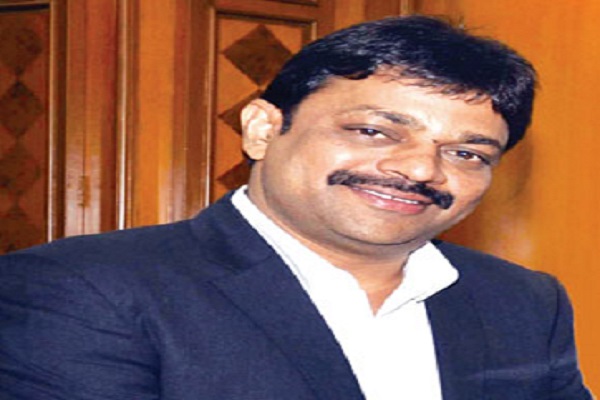
With the announcement of Sagarmala Project, the port sector is expected to get a boost and will be a game changer for the Jawaharlal Nehru Port Trust (JNPT). Neeraj Bansal, Deputy Chairman of the Trust, chalks out the plans and methods that are being used or will be used in the long run to strengthen the port sector
The Government of India has embarked on an ambitious plan to set up the Sagarmala Project. What is your vision for the same?
The Sagarmala Project announced by the Shipping Ministry is a new hope for the country’s ports and port infrastructure sector. The project is aimed at port-led development along the 7,500 km coastline of India and development of Regional Economic Clusters. For long, the growth of India’s maritime sector has been hampered by many procedural and policyrelated challenges, the most important among them being the presence of a dual institutional Sagarmala to be the Game Changer structure that has led to the development of major ports governed by the Union Government and non-major ports coming under the state governments’ ambit.

A key element of this Project is setting up of 10 Coastal Economic Regions (CERs). It will play an important role in realising the vision of ‘Make in India’ programme, as each CER will hold an integrated and comprehensive plan of the area, combining the growth potential of various industrial clusters and economic activities with the upgradation and development of both in major and non-major ports simultaneously.
The key components the Project would be modernising port infrastructure, transforming the existing ports into world-class ports, development of new ports, and improving hinterland linkages through efficient rail, road and water networks for efficient evacuations.

How do you think the role of IT can be enabled in the overall development of the ports sector?
IT plays a crucial role in overall development of the port sector. JN Port is one of the youngest major ports in the country, having four container terminals and one liquid terminal facilitating the best IT support to its customers. It has also brought transparency in the customer services.
JN port has undertaken a project ‘Software Development, Integration and Upgrade of Port Operations’. This project includes design, development, implementation and commissioning of an integrated port operations system covering functional areas like finance, traffic operations, mechanical engineering, administration, marine operations, port planning and development, etc. The projects will also automate the library and workflow management, including document management, with a centralised user management and single sign on.
How has JNPT benefitted from PPP projects?
In order to enhance capacity of ports and upgrade the existing facilities, the Ministry of Shipping adopted a policy to build the facilities under PPP model. Under this model, the port sector has attracted an investment of more than `42,000 crore. Moreover, JN Port was the first to develop a container terminal under this replica on Buy-Own-Transfer (BOT) basis with NSICT in April 1999.
Further, we added GTI as second PPP partner at JNPT. All three container terminals together handle more than 4.45 million cargo in a year. The entry of private entity brought in modern equipment and competition is leading to a significant improvement in key performance parameters. The PPP model has proved to be very successful as the best global players have started terminal operations in the Indian port sector, thus augmenting the capacity of ports.
What are your future projects and pipeline for development of ports and SEZ?
JN Port handled 63.80 million tonnes of cargo during the last financial year. We will add another 10 million tonnes of capacity in 2016 by commissioning a standalone container terminal of 330 metres length by Nhava Sheva (India) Gateway Terminal Pvt Ltd (NSIGT), an SPV of the DP World.
After commissioning of the first phase of a mega fourth container terminal, we will add another 30 million tonnes of capacity by the end of 2017. It is the biggest FDI project in the port sector involving a cost of `7,915 crore by M/s Bharat Mumbai Container Terminals Pvt. Ltd. , an SPV of the Port of Singapore Authority (PSA). It started its construction activities in March 2015 and will develop two kms of jetty in two phases.
JNPT has planned to develop a Satellite Port near Vadhavan in Thane district, a joint venture with the Government of Maharashtra and two dry ports near Wardha and Jalna each, in Vidharbha and Marathawada regions.
Besides, in order to contribute towards ‘Make in India’ campaign, JN Port has taken a lead and is developing a multi-product port-based SEZ. This will create huge job opportunities for the youth in this region.
In order to contribute to ‘Make in India’ campaign, JN Port has taken a lead and is developing a multi-product port-based SEZ. This will create huge job opportunities for the youth in this region
What are the challenges faced by ports and SEZ in the Indian scenario?
Upgrading the basic infrastructure and improve the competitiveness of Indian companies will reduce logistics cost. The port sector requires huge investments for construction of jetties, berths, deepening of channels, procurement, replacement or upgradation of port equipment and to improve hinterland and last-mile connectivity.
A major issue is delay in implementation of projects, especially that of greenfield ports and SEZs or port-based SEZs, on account of the protracted process of receiving clearances, like environmental clearances, security clearances and litigations during tendering process and after awarding the project. There is no single-window clearance, so a project moves through multiple departments and processes at the state and central levels, which considerably delays the process. The other issues in augmenting port capacity are land acquisition, long term loans, etc.
How do you feel the port sector can attain a sustainable profitability?
In order to make port sector attain sustainable profitability, following initiatives need to be taken:
More autonomy and financial power to major ports: Major ports need more liberalisation and autonomy or a new structure akin to corporatisation for speedy decision-making and accountability
Deregulation of tariff: Regulators like Tariff Authority for Major Ports (TAMP) should be transformed from a tariff regulator to a competition regulator on the basis of a new Port Competition Act, applicable to all commercial ports
Productivity improvement: Productivity of ports needs to be improved at par with international level
Proper planning of infrastructure: As the JN Port is handling about 40 per cent of the country’s EXIM containerised cargo and working with more than 90 per cent of the capacity for last several years, port is working on the optimum utilisation of available infrastructure.
Be a part of Elets Collaborative Initiatives. Join Us for Upcoming Events and explore business opportunities. Like us on Facebook , connect with us on LinkedIn and follow us on Twitter, Instagram.












